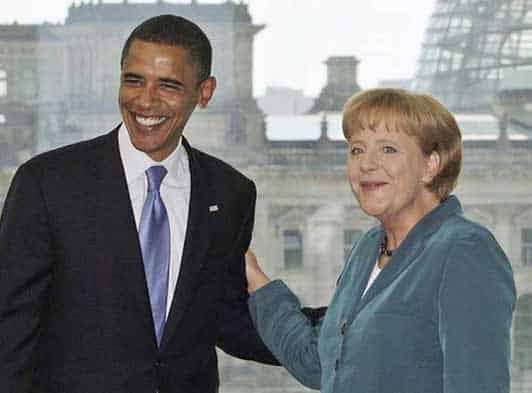DEFLATION
US policymakers have already braced themselves for a bout of deflation, and many corporations are quaking at the prospect of price declines. Some are wondering, though, how bad can it really get?
That the global economy, and most particularly the US economy, is set for a difficult 2009 is beyond doubt. The dramatic action of policymakers including the Federal Reserve in slashing interest rates is testament to the scale of expectations of an economic slowdown. But the Fed and other central banks are also fighting a seldom-discussed foe marching in tandem with stagnation: deflation.
Deflation is simply the opposite of inflation: Prices fall rather than rise. From the perspective of consumers, deflation sounds appealing: Who wouldn’t want to pay less for their groceries month-on-month? However, the characteristics of deflation are fundamentally destabilizing for economies and ultimately destroy both business and consumer confidence. “Deflation creates uncertainty for banks, corporates and consumers,” explains Ian Stewart, director of research at Deloitte & Touche in London. “Moreover, it’s usually a symptom of profound problems in the financial sector. Modern economies rely on the creation of credit through the banking system, and deflation damages that system.”
It is extraordinary that deflation is now the main focus of central banks. Just seven months ago soaring commodity prices were highlighted by oil hitting a record $147 a barrel while agriculture commodity prices were rocketing. Politicians—and to a large extent central banks—were mainly focused on how they could stop higher commodity prices’ producing an inflationary spiral. Now those trends have been decisively reversed, and commodity prices have been falling sharply. Most importantly, in terms of prompting deflation rather than a straightforward cyclical slowdown, the supply of credit has been abruptly halted following the major shock in September and October when many major banks in the developed world came perilously close to collapse.
US consumer prices fell by a monthly rate of 0.7% in December following a 1.7% decline in November and a 1% decline in October. That means that for the 12-month period ended in December the CPI was up just 0.1%, compared to 5.6% for the 12 months ended July of last year. The rate of decline makes it almost certain that at some point in 2009 the annual rate of inflation will turn negative.
While there is no agreed definition of deflation, there is a clear distinction between a temporary period of falling prices and a more long-term trend. “A short period of declines in prices is not problematic,” says David Kern, chief economist at the British Chambers of Commerce (BCC) in London. He says the scale of deflation is similarly unimportant: “It is the persistence of price falls that determines deflation.”
There is general agreement that the United States, the United Kingdom, Japan and some European countries will experience negative inflation at the end of 2009 as 2008’s record energy prices drop out of calculations. However, only the US and Japan are widely considered at risk of deflation, and even for those countries some observers remain skeptical. “There is every possibility that the countermeasures taken by central banks have headed deflation off,” says Kern.
Nevertheless, the devastating consequences of deflation mean that for central bankers preventing it is paramount. “Central banks fear deflation for two reasons,” explains Christian Broda, head of international economic research at Barclays Capital in New York. “Firstly, deflation implies that they could become powerless to act using traditional tools if rates reach zero. To a large extent, this concern is less relevant in 2009, as it has already occurred. Secondly, deflation is feared because of its negative consequences for debt holders [such as corporate borrowers]. This is the main concern looking forward.”
 |
|
|
Big Problems for Corporates
Corporates are hit by a double whammy with deflation. For one thing, deflation increases the real burden of debt if it is not anticipated and therefore is not factored into nominal interest rates—as it has not been in the United States until recently. “All companies can hope to do is reduce costs elsewhere, such as on capital and labor expenses,” says Broda. Moreover, given the effect of deflation on asset prices in general, there is likely to be little appetite for investment or M&A; as corporates delay acquisitions in the expectation of lower prices in the future.
Assuming bank lending and bond markets are available for corporate borrowing, deflation should prove less of a problem for future borrowing, according to Broda. “If deflation is anticipated [as it is currently], then nominal interest rates fall and the burden of debt is partially hedged,” he explains. “[So], credit crunch aside, deflation is less of a concern because costs should reflect deflationary expectations.”
The second blow for corporates from deflation is that consumers postpone purchases in a deflationary environment in expectation of lower prices in the future. “That exacerbates the downturn in the economy and hits corporates’ revenues,” explains the BCC’s Kern. “In the current situation such behavior would also impact the housing market, which would have additional knock-on effects on the economy.”
Lower consumption will result in lower corporate profits, which will prompt firms to reduce costs. “However, firms are reluctant to reduce nominal wages, so instead they tend to hire less and fire more,” says Broda. “The impact of higher unemployment for households that are already overextended is lower consumption. So a negative loop is created. The bulk of fiscal and monetary policy is currently aimed at preventing this loop becoming established because, once it’s in place, it’s extremely hard to break.”
 |
 |
 |
|||
|
|
|
How To Fight Deflation
As interest rates head toward zero, the options open to central banks and governments rapidly diminish. There are just two major options open to policymakers—one fiscal, the other monetary. Both are controversial and potentially risky, and both are already being employed by the US and other major economies on a scale never before seen.
The fiscal option—essentially, spending huge sums of taxpayers’ money on infrastructure and other schemes—is broadly reminiscent of President Franklin Roosevelt’s New Deal, which is credited by some with pulling the US out of the Great Depression. President Barack Obama’s new administration has embraced the fiscal option with gusto: In early January, before taking office, he announced a $775 billion investment and tax-cutting plan over two years, and as Global Finance went to press, he was expected to increase this to more than $1 trillion.
The second option, the monetary policy of quantitative easing (QE), is less tested. Colloquially, QE is known as “printing money,” although in reality money is only created on the balance sheet of a central bank. This is then used to buy assets such as government, corporate and asset-backed bonds, and even equities. The rationale is that by increasing the money supply asset prices rise, creating a virtuous circle where the incentive to lend, borrow and buy is restored.
Depending on the assets purchased, a policy of QE can also be used to clean up the balance sheets of banks, encouraging them to begin lending again. This was the original intention of the US Troubled Asset Relief Program (TARP) and could be re-prioritized by the Obama administration. As Barcap’s Broda notes, “In the last few months, a number of taboos have been broken with regard to the Fed buying long-term treasuries and even riskier assets such as asset-backed bonds.”
In the UK, chancellor of the exchequer Alistair Darling recently said creating a “bad bank” to buy toxic assets from banks was under consideration. As Deloitte’s Stewart notes, such a policy could be helpful because “the recovery of bank balance sheets is a precondition for the recovery of lending, which is a precondition for the recovery of the economy.”
There is little evidence that quantitative easing works. Certainly it did not in Japan in the 1990s. But that is no reason not to try it, according to Hetal Mehta, senior economic adviser to the Ernst & Young economic forecasting ITEM Club. “It’s a policy of last resort. If it’s being employed, that’s because nothing else can be done,” she says. While the benefits of QE might be questionable, it does offer an advantage over fiscal expansion as a way to reflate the economy: It doesn’t lumber the taxpayer with vast amounts of debt and means the state owns assets that it can sell in the future.
Moreover, there are striking differences between the United States’ current predicament and Japan in the 1990s, which may mean quantitative easing will work this time. Japan’s deflation during the 1990s was chiefly a problem for corporates because of their high debt levels. In contrast, the deflation problem facing the US now is focused chiefly on consumers, who have borrowings of 120% of income. “This changes the way that deflation will affect the economy,” says Barcap’s Broda. “In Japan firms could not invest because of their high debt burdens. But in the US corporates will be hit because consumers, crushed by their debt, will consume less.”
That means that government’s fiscal largesse in the form of tax cuts and infrastructure spending could have a greater effect in the United States than in Japan in the 1990s. Moreover, as Broda notes, the implementation of QE itself looks to be more effective in the US than in Japan a decade ago.
“In Japan government bonds were swapped for cash, but banks largely sat on the cash,” says Broda. “In the US the banking sector is now largely being sidestepped, and debt instruments themselves are being bought: Two-thirds of all commercial paper is now on the balance sheet of the Fed as a result of its efforts to maintain a flow of credit to companies. Similarly, the very announcement that the Fed will buy MBS [mortgage-backed securities] has had a beneficial effect on interest rates in that market. Such measures were only undertaken late and in a piecemeal fashion in Japan.”
In addition, Japanese banks never had to face up to their bad debts. Indeed, lax bank lending regulations allowed corporates to roll over loans in order to protect both banks and firms. “This zombie lending meant that the natural adjustment, whereby less productive and high debt companies fail and are replaced by more productive and lower debt firms, never happened,” says Broda. “Of course, the whole purpose of government intervention in these periods is to act as a buffer to economic readjustment. However, government [in the US] must be careful not to prolong the problems as occurred in Japan. But that is the challenge of the exit strategy, not for now.”
QE is undeniably risky. “By definition, QE is successful when inflation reappears,” says Deloitte’s Stewart. “Clearly, there is a risk that inflation can soar once it returns.” Ernst & Young’s Mehta says that reversing QE could be tricky. “Knowing how much money to take out of the system and when is very subjective and is uncharted territory,” she says. “A false move could have damaging repercussions in risking an inflationary spiral or alternatively prolonging the downturn.”
Barcap’s Broda says that the “sheer magnitude of the monetary expansion” makes inflation a risk for 2010. “It is always hard to fine-tune a recovery, and this one will be no exception,” he says. “More importantly, it is likely that the Fed will err on the side of growth and hence tolerate higher inflation than normal. But I don’t expect it to get out of control.”
CAN BUSINESSES PREPARE FOR DEFLATION?
Deflation is unarguably destructive for corporates, but can they do anything about it? “There is little direct action that a company can take,” says David Kern, chief economist at the British Chambers of Commerce (BCC) in London. “The scale of the problem requires government action. It must be governments’ number-one priority, and companies can perhaps lobby their governments to ensure it is.
As Kern notes, governments are politically obliged to protect jobs to help maintain demand, but they need to ensure a fine balance is maintained between softening the blow and prolonging the downturn. “Ideally, governments should advocate lower wages to ensure that companies can maintain flexibility, but that’s unlikely to happen,” he says. As a halfway measure, the BCC has urged the UK government to freeze the minimum wage.
Although companies are unable to help combat deflation directly, there are a number of practical measures they can undertake to try to reduce its impact.
Firstly, companies need to take time to understand it. “In the past 30 years in many developed countries macroeconomic risk has been limited,” says Ian Stewart, director of research at Deloitte & Touche in London. “Now it’s back in a big way, and companies need to make sure they understand how deflation will affect sales, commodity prices and credit availability.”
Similarly, corporates should be planning right now how they will react should prices begin to fall and how they can cut costs. Thirdly, corporates should reduce debt—something the credit crunch has already prompted by limiting access to bank and bond debt. They should also try to reduce inventories immediately and aim to operate a just-in-time model to limit the effects of deflation on their margins.
Companies must redouble their efforts to find new markets and opportunities. While the current economic crisis is global, some markets will continue to grow and will not experience deflation; arguably it was the efforts of Japanese corporates overseas rather than government action that eventually rescued the country from deflation. Companies should aim to increase productivity without increasing costs and should try to deepen relationships with suppliers and consumers so that price changes can be better managed and contracts can be reviewed as they need to be.
Laurence Neville



